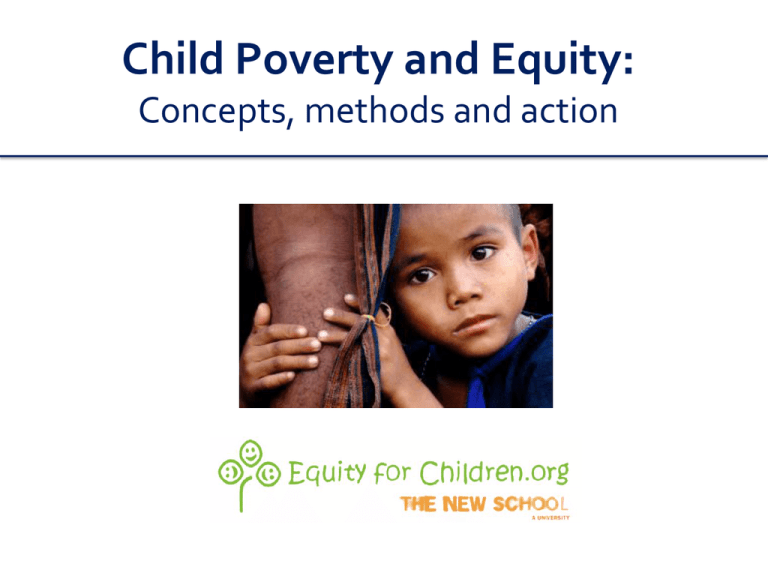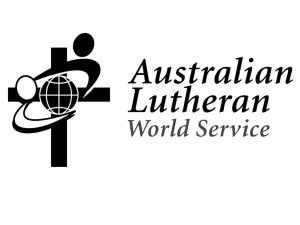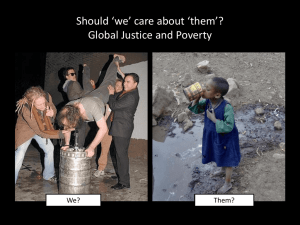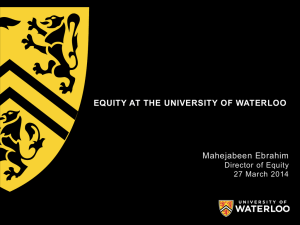Concepts, Methods, and Action - Academics Stand Against Poverty
advertisement

Child Poverty and Equity: Concepts, methods and action Content 1. Multidimensional Child Poverty. The experience in LA - Conceptual, Methodological and Political Issues 2. Equity and Poverty - Framework - Equity for Children- New School Program (EFC) - CROP & EFC program - Research on equity: some results 3. Final Comments Multidimensional Child Poverty: Recent LA experience and debate Conceptual and Methodological decisions are Political decisions - Rights approach, capability approach - Thresholds and social protection floor / Redistribution and social justice/Childhood and citizenship/ Inter-generational and gender equity - Multidimensional poverty or wellbeing? • Which Dimensions, Indicators and Thresholds? • Intersection or Union? Weights? • Poverty cutoff = Number of deprivations Indicator : Education Different Options Threshold Options Threshold Age % Not Attending 1. Basic Education 7-15 years 6% 2. Preschool and Basic Education 4-15 years 12% 3. Preschool, Basic and Secondary Education 4-17 years 17% Multidimensional household survey in El Salvador (Pilot study, 2013) What is the ‘social minimum’? Dimension: Housing Union or intersection? ROOF Deprived No No Yes Yes FLOOR Deprived No Yes No Yes WALL Deprived No 51% 7% 16% 3% Yes 7% 7% 4% 4% 49% of children housing deprived Union (1 or more depriv.) = Intersection Multidimensional household survey in El Salvador (Pilot study, 2013) Impact on Total Multidimensional Child Poverty Union = 73.6% Intersection (2 or 3 deprivations) = 63.0% 2 or 3 depriv.= 18% of children; 3 depriv. = 4% of children Total Multidimensional Child Poverty: Impact of Union or Intersection Total Child Poverty number of deprivations by Income and Relative Gap 19.6 100% 90% Intersection (2 or 3 depriv.) in Housing Materials 81% 80% 65% 70% 63% 60% 50% 47% 41% 40% 45% 30% 25% 4.1 20% 16% 10% 1.77 2% 0% 7 6 or + 5 or + 4 or + 3 or + 2 or + 20 19 18 17 16 15 14 13 12 11 10 9 8 7 6 5 4 3 2 1 0 1 or + 100% 90% 80% 70% 60% 50% 40% 30% 20% 10% 0% 7 6 or + 5 or + K Gap T1/T3 National 20 19 86.1% 18 17 16 73.6% 15 73% 13.1 14 13 12 58% 62.4% 11 10 48% 9 8 7 34% 6 28% 5 2.5 4 3 1.38 2 1 4% 0 3 or + 2 or + 1 or + Union in Housing Materials 4 or + K T1 (poorest) T3 (richest) Gap T1/T3 National T1 (poorest) Multidimensional household survey in El Salvador (Pilot study, 2013) T3 (richest) Multidimensional Child Poverty: Recent LA experience and debate Methodologies: 1. Rights Approach: CEPAL- UNICEF (2012) 2. Capability- OPHI K > 1 (Chile, Colombia, Mexico) 3. Well-Being What is poverty to a child? “I feel bad. I feel like the odd one out…You lack self-esteem. You feel like you shouldn’t talk wherever you are, like you shouldn’t be expressing your ideas. You feel lonely. You feel ashamed. Like if you have only two underpants and you have to wear one and wash the other and hang it up to dry everyone will always see that you have only two – the red one and the green one – and you are alternating between them.” 16 year-old girl, Rusinga, Kenya Christian Children’s Fund Study How Children Experience Poverty: Three interrelated domains Deprivation: A lack of material conditions and services Exclusion: A result of unjust processes through which children’s dignity, voice, and rights are denied Vulnerability: An inability of society to cope with existing or probable threats to children in their environment D E V Equity & Poverty A Conceptual Framework Sources of Inequity Material Deprivations Vertical Inequalities (income and basic social services) Yes Discrimination Horizontal Inequalities (gender, ethnicity, disability, noncitizen, refugee, etc.) No Yes No Multidimensional child poverty • Overlapping categories of inequity but different causes • Call for different policies Vulnerable groups Child Rights Child Poverty Equity and Equality Public Policy How? Research| Events | Engaging Students, Practitioners, Governmental & Non-Profit Organizations Our Actions • Create and disseminate knowledge • Promote awareness • Increase communication and action Our Vision • Social, economic, cultural and political rights for all children worldwide • Societies based on social justice and human rights • Fair distribution of power and resources for all children and their families • All children protected from harm and discrimination Equity for Children: Key partnership with CROP February 2014: ‘Child Poverty, Democracy and Public Policy’ International Seminar in DF, Mexico Objective To evaluate critically the current knowledge and public policy that impact the prevention and eradication of child poverty and inequality. Equity for Children: ‘Approaches to Equity’ Project • 24 month study from 2013 to 2015 • Interviews, key documents, analyses of leading practitioners about views of equity, equality, and challenges faced – Phase I International Organizations: World Bank, UNICEF, Save the Children, MDGs Group, WHO, UN Women, Equity for Children and Oxfam International. • Key Goals: 1. Understand needs for realization of social justice and human rights 2. Indentify key actors’ concepts, research, evidence, policies about equity and equality 3. Create debate platform to address those findings Main Objective of Phase I • To identify key equity approaches, best practices and successful local policies • Key Questions of Research Phase I: 1. What are the current equity concepts and approaches? 2. What are the major challenges and possible strategies to push forward equity on the international development agenda? Overall Findings • Equity concepts are well positioned on the agenda as an approach to analyze social issues and to design and implement interventions and policies • References to theoretical concepts are rarely made • Equity definitions vary from organization to organization but embrace commonalities Common Understandings of Equity: 1. Addressing the most marginalized and disadvantaged populations first 2. Acting on unjust deprivations based on horizontal inequalities 3. Providing equal opportunities for all 4. A question of fairness (fair treatment) Different Understandings of Equity: • Uneven emphasis on outcomes versus opportunities: What should be measured? • Outcomes: Measuring impact on the lives of disadvantaged populations, not only access • Equal Opportunities: Measuring improved access to services • How to reduce the gap/debate about focalized policies vs universal policies Main Challenges 1. Lack of disaggregated data and equity analysis 2. Confusion on how to translate deprivation evidence into policies with impact 3. Lack of political will and budgetary allocation 4. Donor priorities focus on short term impact resulting in spending on small vertical projects 5. Lack of shared strong advocacy The Way Forward: 9 Suggestions 1. Measure multidimensional child poverty and inequities 2. Measure outcomes and opportunities in disaggregated data 3. Develop a more holistic vision of society rather than focusing on the most disadvantaged to generate social change 4. Analyze the determinants of how society as a whole produces and reproduces inequalities The Way Forward: 9 Suggestions 5. Strengthen governance through local participatory planning and social accountability 6. Promote local action and broad public policy 7. Promote and ensure children’s and adolescents’ participation and agency 8. Develop transparent public budgets for social policies and fair taxation 9. Focus on structural causes and inequity at a macroeconomic level






